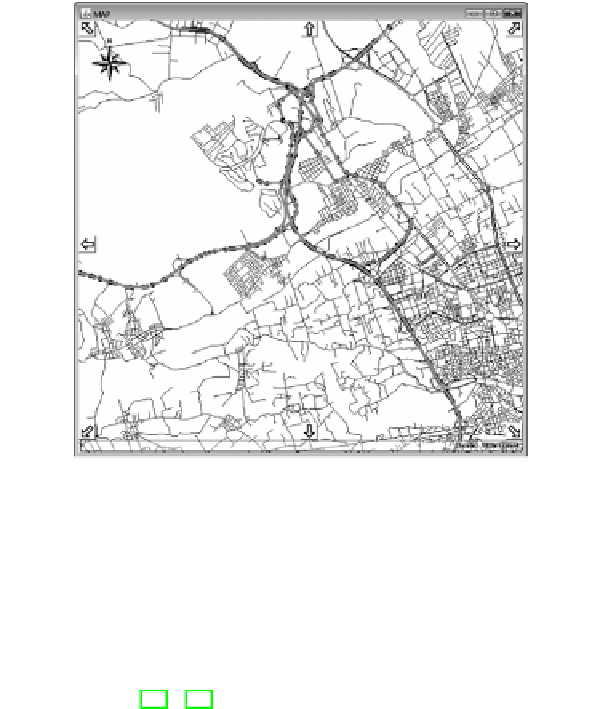Information Technology Reference
In-Depth Information
Fig. 5.
Routes used for the system test
levels: signal, data and cognitive, while horizontal axis distinguishes among fu-
sion functional areas: analysis, reasoning and acting.
5.2 Multiple-Sensor Data Fusion
Recently, many researchers have approached the inter-vehicles collision problem
by using traditional data fusion techniques, and a number of different filters are
used in the literature [17], [18]. Although, different techniques are being studied
and analyzed by our group, to find a suitable estimate of the vehicle maneuver
anytime, we will assume an IMM based method. The benefits of the interactive
multiple model (IMM) based filter have been proved to be useful for navigation
purposes [6]. In our case, the features of IMM based method are used for analysis
and reasoning functional areas of the fusion model. The use of maneuver oriented
models allow the determination of the vehicles roles in a situation. Basics of the
IMM approach can be found in [19].
6
Implementation and Evaluation
The system has been implemented by means of three tools: Java Integrated
Development Environment, Esper for creating and runing the CEP engine and
SUMO for the generation of trac simulations [20].
First tests were performed based on routes with the equipped vehicle pro-
totype. Nevertheless, large scale tests are only affordable by means of trac
simulators, such as SUMO. Simulations in this work represent 30.000 vehicles
driving more than 15 main routes and a number of alternative routes for each.
Routes are depicted in Fig. 5. On this image, it can be seen how routes converge




Search WWH ::

Custom Search